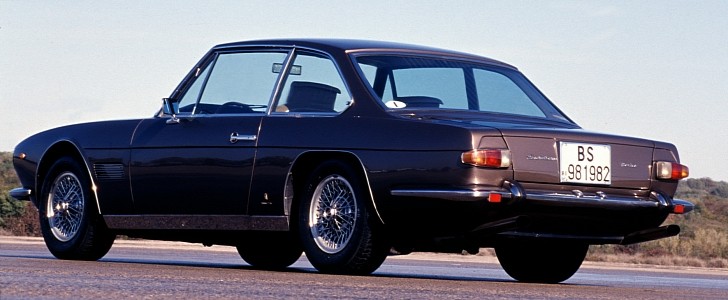To this day, the Maserati Mexico is still considered one of the finest Italian grand tourers of all time, with the production version having made its public debut exactly 55 years ago at the 53rd edition of the ‘Mondial de l’automobile de Paris’ on October 6, 1966. Happy anniversary, bello!
Designed by Vignale, the Mexico started life as a 2+2 prototype built on a 5000 GT chassis. The showcar was then sold to Mexican president Adolfo Lopez Mateos and eventually became known as the Mexico, although there’s an interesting story behind that. Shortly after, Maserati decided to put it into production, making 485 units over a six-year period between 1966 and 1972.
One hypothesis regarding why this car was given the name of a Central American country revolves around a Mexican customer and 5000 GT Allemano owner, who became smitten by the Vignale-designed prototype, which he then went on to buy. He even insisted that the bodywork was transferred to the chassis of his 5000 GT.
Another inception story involves racing driver John Surtees, who won the Mexican Grand Prix behind the wheel of a Cooper-Maserati T81. In the end, it may have been a series of coincidences that convinced Maserati to name the production-spec car, Mexico. Regardless, the name stuck and the vehicle is now the stuff of legend.
From launch, the Mexico was available with either a 4.2-liter V8 engine with 260 hp or a 4.7-liter V8 with 290 hp. The former could take you all the way to 150 mph (240 kph), while the latter ushered you to a top speed of 158 mph (255 kph).
Meanwhile, standard equipment included leather seats, power windows, wooden dashboard, air conditioning and servo-assisted ventilated front disc brakes, whereas the automatic gearbox, power steering and the radio were all optional extras.
Back then, the Maserati Mexico’s interior was described as “an Italian-style lounge.” We have to admit, it’s still rather stylish.
One hypothesis regarding why this car was given the name of a Central American country revolves around a Mexican customer and 5000 GT Allemano owner, who became smitten by the Vignale-designed prototype, which he then went on to buy. He even insisted that the bodywork was transferred to the chassis of his 5000 GT.
Another inception story involves racing driver John Surtees, who won the Mexican Grand Prix behind the wheel of a Cooper-Maserati T81. In the end, it may have been a series of coincidences that convinced Maserati to name the production-spec car, Mexico. Regardless, the name stuck and the vehicle is now the stuff of legend.
From launch, the Mexico was available with either a 4.2-liter V8 engine with 260 hp or a 4.7-liter V8 with 290 hp. The former could take you all the way to 150 mph (240 kph), while the latter ushered you to a top speed of 158 mph (255 kph).
Meanwhile, standard equipment included leather seats, power windows, wooden dashboard, air conditioning and servo-assisted ventilated front disc brakes, whereas the automatic gearbox, power steering and the radio were all optional extras.
Back then, the Maserati Mexico’s interior was described as “an Italian-style lounge.” We have to admit, it’s still rather stylish.

